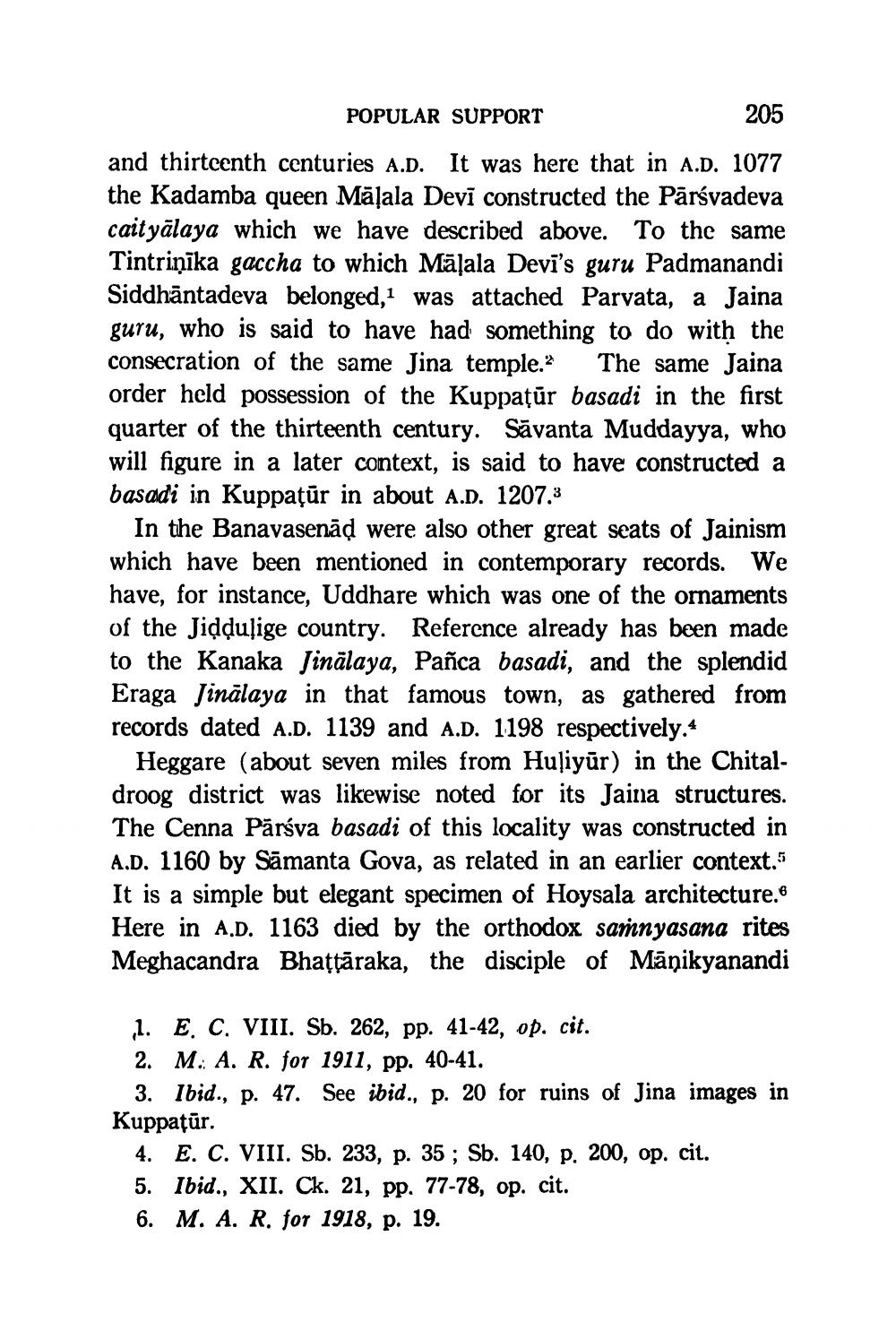________________
POPULAR SUPPORT
205
and thirtcenth centuries A.D. It was here that in A.D. 1077 the Kadamba queen Māļala Devi constructed the Pārsvadeva caityālaya which we have described above. To the same Tintriņīka gaccha to which Māļala Devi's guru Padmanandi Siddhāntadeva belonged,1 was attached Parvata, a Jaina guru, who is said to have had something to do with the consecration of the same Jina temple. The same Jaina order held possession of the Kuppațūr basadi in the first quarter of the thirteenth century. Sāvanta Muddayya, who will figure in a later context, is said to have constructed a basadi in Kuppaţūr in about A.D. 1207.3
In the Banavasenād were also other great seats of Jainism which have been mentioned in contemporary records. We have, for instance, Uddhare which was one of the ornaments of the Jidduļige country. Reference already has been made to the Kanaka Jinälaya, Pañca basadi, and the splendid Eraga Jinālaya in that famous town, as gathered from records dated A.D. 1139 and A.D. 1198 respectively.4
Heggare (about seven miles from Huļiyūr) in the Chitaldroog district was likewise noted for its Jaina structures. The Cenna Pārsva basadi of this locality was constructed in A.D. 1160 by Sāmanta Gova, as related in an earlier context." It is a simple but elegant specimen of Hoysala architecture. Here in A.D. 1163 died by the orthodox sarnyasana rites Meghacandra Bhattāraka, the disciple of Māņikyanandi
1. E. C. VIII. Sb. 262, pp. 41-42, op. cit. 2. M. A. R. for 1911, pp. 40-41.
3. Ibid., p. 47. See ibid., p. 20 for ruins of Jina images in Kuppațūr.
4. E. C. VIII. Sb. 233, p. 35 ; Sb. 140, p. 200, op. cit. 5. Ibid., XII. Ck. 21, pp. 77-78, op. cit. 6. M. A. R. for 1918, p. 19.




